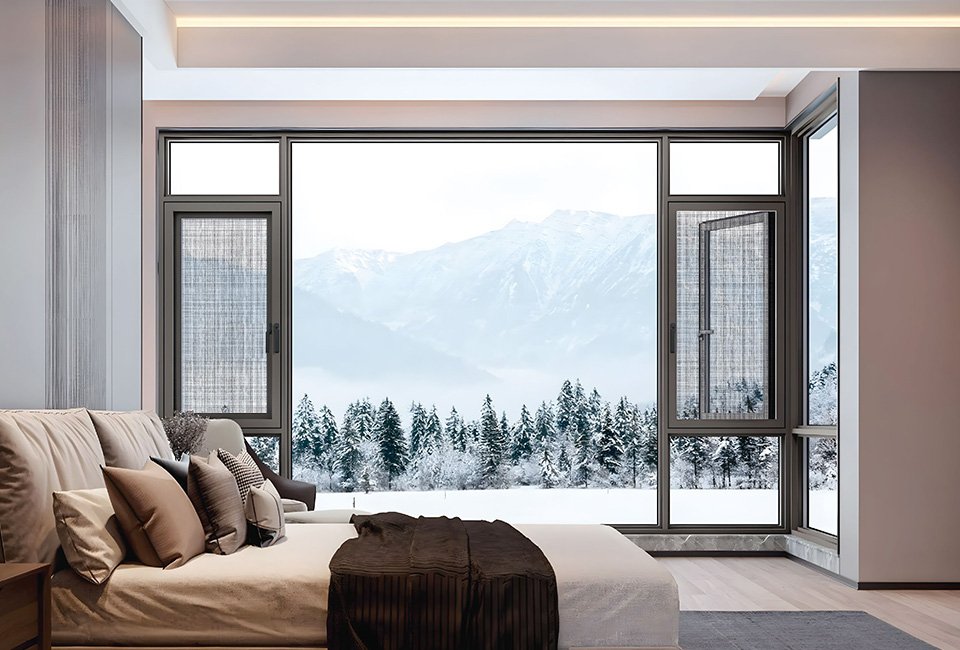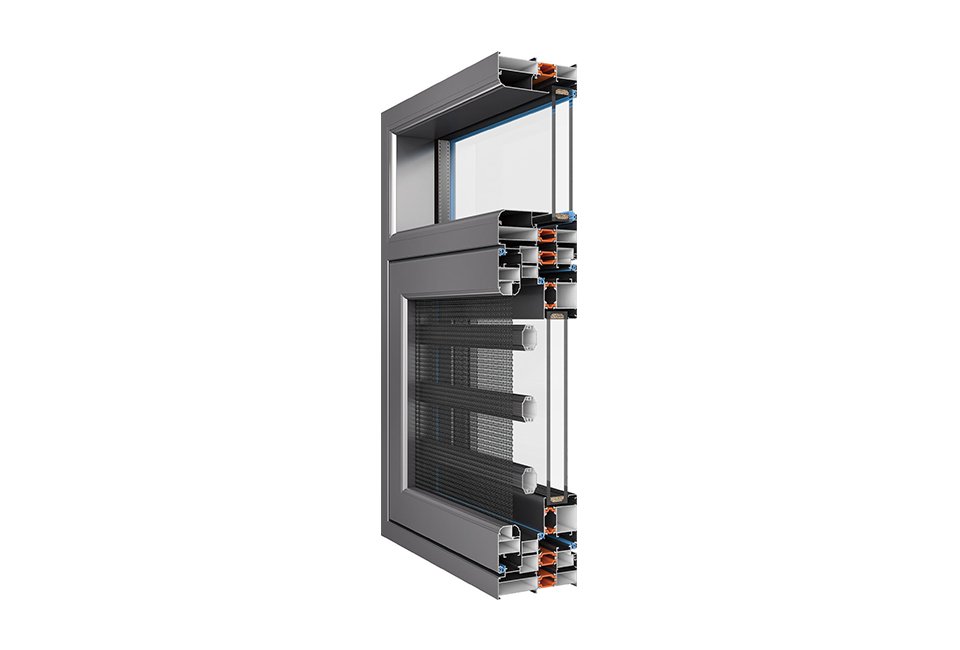Choosing the right window type for a cold climate is essential to maintain indoor comfort and reduce energy costs. Aluminum swing windows—known for their sleek look, durability, and functionality—are becoming increasingly popular in residential and commercial buildings. But are they a good fit for regions that experience freezing temperatures and snow? This article explores how well aluminum swing windows perform in cold climates, what features to look for, and how to make them more energy-efficient.
Can Aluminum Swing Windows Handle Cold Weather?
Aluminum is a strong, low-maintenance material, but it has one downside in cold climates: it’s a good conductor of heat. That means untreated aluminum frames can allow heat to escape from your home, increasing your heating bills and reducing thermal comfort. However, modern aluminum swing windows are engineered with features that overcome this issue, making them highly suitable for cold environments.

Key Features That Improve Cold Climate Performance
1. Thermal Break Technology
High-quality aluminum swing windows designed for cold climates include thermal breaks—non-metal insulating barriers placed between the interior and exterior frame. This helps reduce heat transfer and condensation buildup on the frames.
2. Double or Triple Glazing
Double or triple-pane glass filled with argon or krypton gas provides excellent insulation. When paired with low-E (low-emissivity) coatings, these windows reflect heat back into the room, maintaining indoor warmth even in subzero temperatures.
3. Weather Sealing
Proper weatherstripping and tight sealing around the frame minimize air infiltration. Swing windows typically seal better than sliding windows due to the way they close against the frame, offering better wind resistance and thermal insulation.
4. Frame Design & Installation
Well-constructed frames with multi-chambered profiles or additional insulation layers further enhance performance. Professional installation is equally important to avoid thermal leaks.

Additional Benefits in Cold Climates
- Condensation Control: With thermal breaks and insulated glazing, the interior glass surface stays warmer, reducing the risk of condensation and mold growth.
- Durability: Aluminum resists warping and cracking even under extreme temperature changes.
- Security: Cold weather often brings harsh storms. Aluminum swing windows are robust and can be reinforced with multi-point locks for added safety.
Considerations Before Buying
- Certification: Look for windows that meet ENERGY STAR® or other regional energy efficiency standards.
- Customization: Many Chinese manufacturers like Delanshini Doors and Windows offer customized swing window solutions with insulated glass, thermal break frames, and finishes designed to perform in cold climates.
- Price vs. Performance: Thermal break and multi-glazing options may increase upfront costs, but they offer long-term savings through reduced energy bills.
Conclusion
Yes—aluminum swing windows can be highly suitable for cold climates, provided they are manufactured with the right thermal insulation technologies and installed correctly. Their modern look, airtight sealing, and structural strength make them an excellent option for homeowners and builders looking for both style and performance. If you’re considering importing from China, Delanshini offers customizable, energy-efficient solutions tailored for cold weather applications. Contact Delanshini Doors and Windows today at wang@gddlsn.com to discuss your project and request a free quote.
Casement & Swing Windows Focus
The Ultimate Guide to Aluminum Casement Windows: Design, Functionality, and Durability
The Ultimate Guide to Aluminum Casement Windows
Aluminum Swing Window vs. Casement Window: What’s the Difference?
Why Choose an Aluminum Crank Out Window for Modern Homes?
What Is an Aluminum Hinged Window? Benefits, Types, and Applications
How Much Does an Aluminum Casement Window Cost? [2025 Price Guide]
Choosing the Right Glass for Your Aluminum Casement Windows
How to Choose Between Sliding, Casement, and Swing Aluminum Windows
Aluminum Casement Windows for Commercial Buildings: Benefits and Applications
Soundproofing with Aluminum Casement Windows: A Quieter Home Environment
How Aluminum Casement Windows Enhance Home Security
Customizing Aluminum Casement Windows for Your Home
Energy Efficiency: How Aluminum Casement Windows Can Save You Money
Top 10 Benefits of Choosing Aluminum Casement Windows
6 Ways to Determine Which Direction a Casement Window Opens
How to Choose Energy-Efficient Casement Windows?
Are Aluminum Swing Windows Suitable for Cold Climates?
